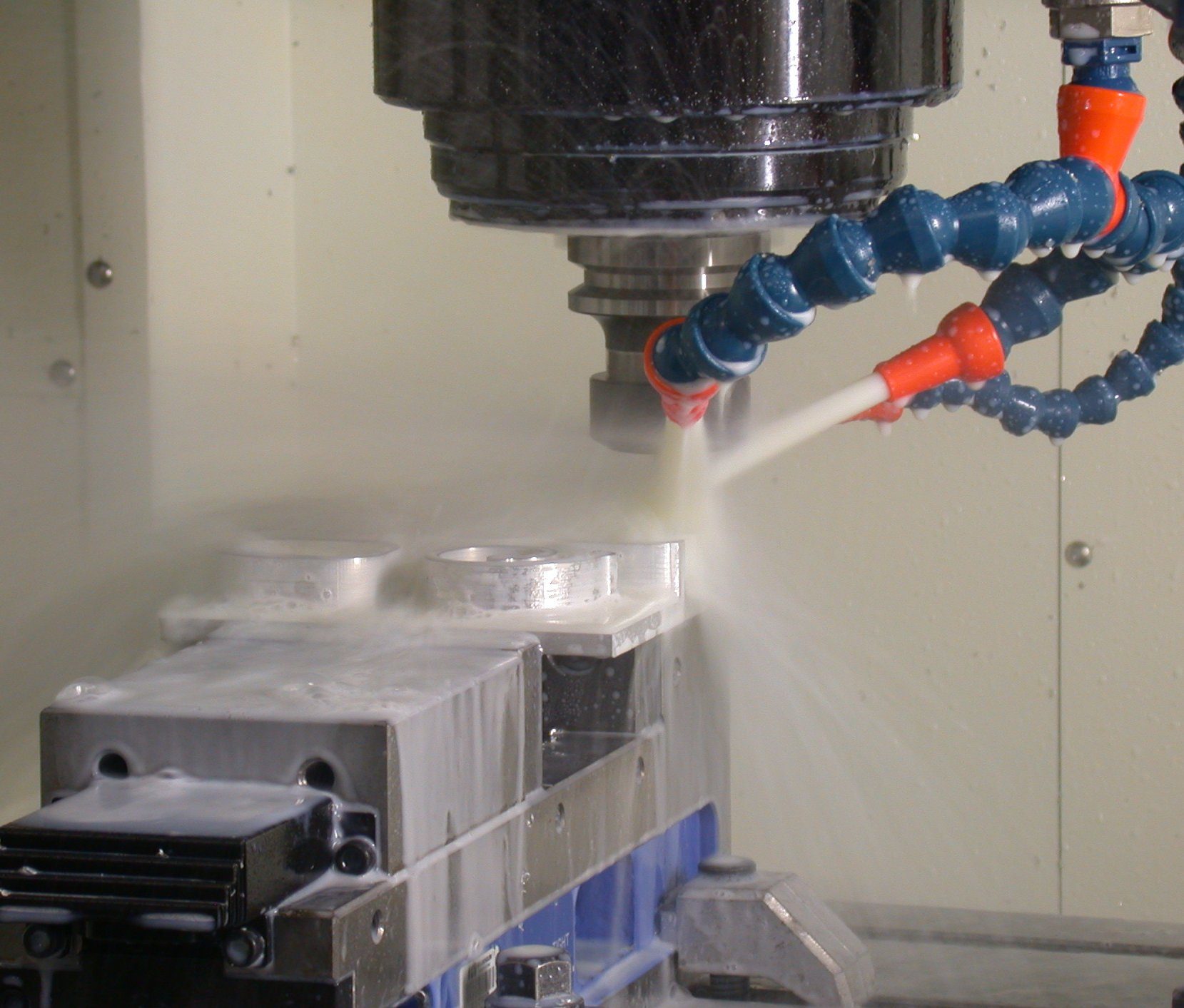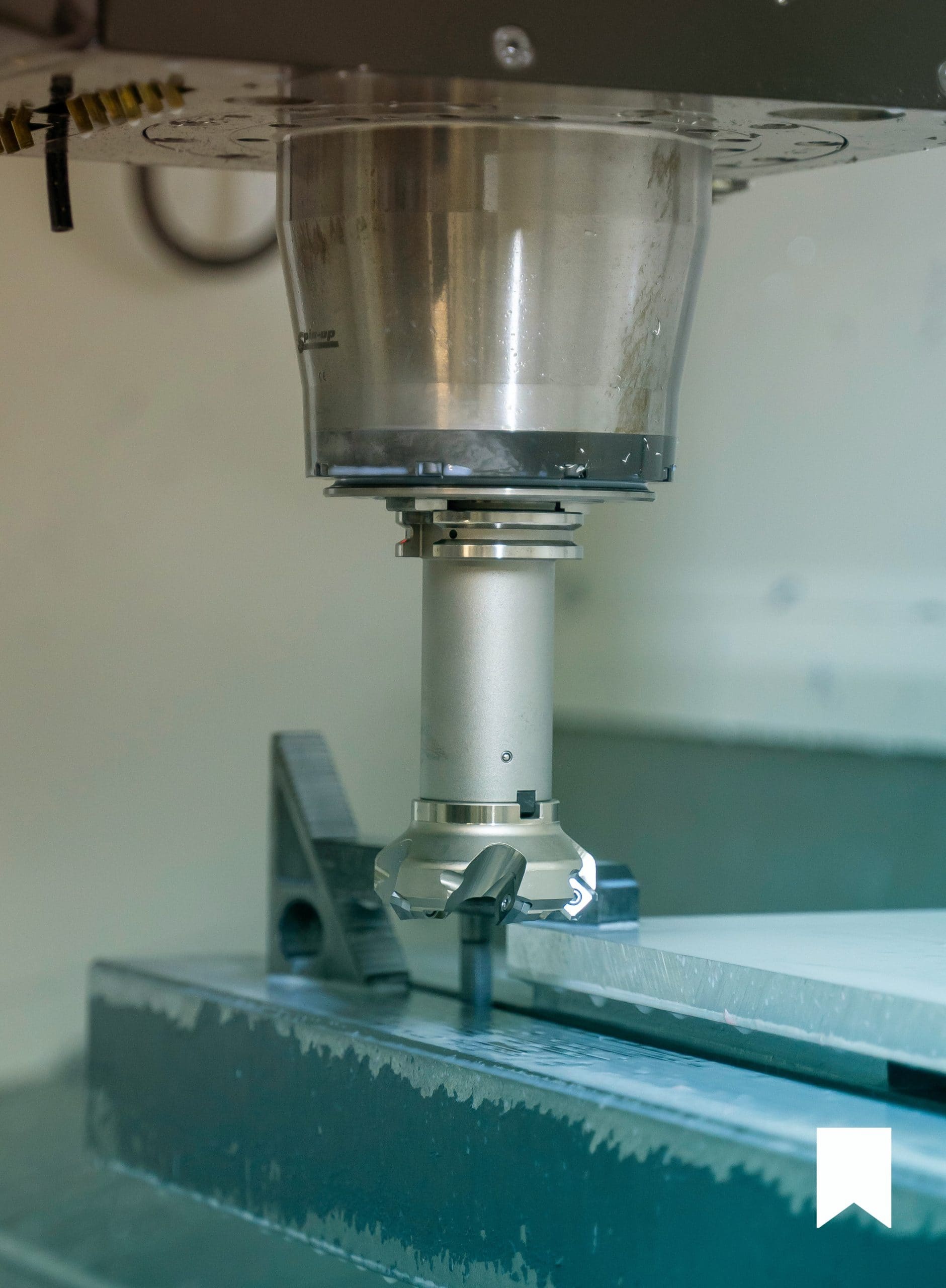CNC Milling Services
With CNC milling, it’s possible to manufacture products in all shapes and sizes with the highest levels of complexity and quality. Thanks to the incredibly precise nature of computer numerical control (CNC), a CNC mill can take raw materials of all kinds, and transform them into field-ready components with mind-blowing speed and repeatability.
What is CNC Milling?
CNC milling is an automated machining process used to manufacture 2D and 3D parts. While CNC mills can easily tackle simple jobs, their true power shines when part designs contain geometry/features that would otherwise be impractical or unachievable by manual machining methods. CNC mills rely on a wide assortment of specialized cutting tools to remove material from a stock component. This process can be carried out on a vast array of materials including (but not limited to) metals, plastics, rubber/foam, wood, plastic and more. CNC mills come in a variety of sizes and axis configurations, and can be customized to meet specific production requirements (cutting envelope, tool pockets, machining speeds, etc.)
The CNC mill is typically programmed using CAM software, but they can also work effectively through manual G&M code entry as well as interactive programming systems that are offered by a growing number of machine tool providers. The code that is generated is then used to give commands to the machine such as when/where/how to move and operate (i.e. change stock position, turn cutting head at a specific rate, move along a given path, etc.) Depending on the complexity of a given part, a CNC Mill program can consist of thousands (even millions) of lines of code.
How Does CNC Milling Work?
CNC milling is one of the most innovative manufacturing technologies to date. A cutting tool spins at high speeds in a central spindle and executes movement functions according to a preprogrammed set of code. Common cutting tools included drills, taps, end mills, and more. At the same time, stock material (which has been fixed in place using various work-holding methods) will also move, spin and rotate to expose different machining surfaces. Because all operations are controlled by the computer,
CNC mills can produce large production with speed, precision and accuracy, all while requiring minimal operator intervention. Most modern CNC milling machines can automatically switch between different
cutting tools via an automatic tool changer, and many are equipped with part loaders and tool/stock probes to increase the degree of automation.
Common milling operations include: drilling, tapping, countersinking, milling profiles, contours, slots and pockets, etching/engraving, edge breaking (radius/chamfer), facing, and many more.
CNC Milling Capabilities
Here is a quick breakdown of R&R’s CNC milling capabilities.
- +/- 0.0005” Tolerance
- This is a typical tolerance, but it can vary depending on the size and type of material used, and previous operations it may have undergone.
- X30” x Y”20” x Z20” Work Envelope
- These are general guidelines, as the machining window can vary slightly above/below these parameters based on work holding, part geometry, etc
- Machinable materials: Metals, Alloys, Plastics
- Multiple Axis Machining
Advantages of CNC Milling
CNC mills offer numerous advantages for project completion. Here are several.
- CNC mills are highly computerized, reducing the potential for human error during the machining process.
- CNC mills offer astonishing consistency, accuracy, and precision.
- Multi-axis capabilities provide the ability to produce parts complex geometry and features
- CNC mills can machine parts and products in nearly any size or shape.
- It is a cost-effective process for prototypes and short runs.
- CNC mills can hold tight dimensional tolerances.
- Incredibly smooth finishes are achievable.
- CNC milling is highly scalable and is ideal for part production in quantities from 1 to 10,000 parts.
CNC mills are ideal for items that need repeatable, reliable precision manufacturing. They can easily handle low to high volume runs and create rapid prototypes. Since they can handle nearly any type of stock material, CNC mills are an ideal machine for nearly any job.
Applications for CNC Milling
CNC Milling can produce nearly any shape in a wide range of sizes and materials. Because of their diverse capabilities, the potential applications for a CNC mill are some of the most varied the machining world has to offer.
Parts requiring a 3, 4, or 5-axis machining can all be produced with a CNC mill. This makes the CNC milling process a good fit for a wide variety of industries including:
- Automotive, farming, mining, rigging, aerospace, tech and more.
Applications across all industries include:
- Rapid Prototyping
- Low cost, fast prototype production
- Small Batch Machining
- Cost efficient manufacturing for orders at lower qty.
- Production Manufacturing
- Precise and repeatable machining for hundreds-thousands of parts
CNC Milling Examples
Our Process
When you hire R&R for your CNC Milling work, you can expect the following process to take place after submitting a quote request.
We will get back to you same-day with clarifying questions regarding:
- Quantity
- Material
- Dimensions
- Drawings/Cad Files
You can expect a customized project quote within 24-48 hours.
During our quote process, we will consult with our shop staff regarding:
- Materials in Stock
- Necessary Tooling
- Jobs Queued
- Regular or Expedited Lead Time
- Outside Vendor Components Needed
- Vendor Quotes to Ensure Best Pricing
- Vendor Lead Time for Part Orders
The quote process is typically completed via email, and we will follow up regarding additional information or specific part elements as needed.
Frequently Asked Questions About CNC Milling
At R&R Manufacturing, we primarily run a variety of ferrous and non-ferrous metals including (but not limited to) mild/hardened steel, stainless, aluminum, brass, bronze and copper. As customers’ needs evolve, we have also started machining an assortment of plastics based on new part requirements. These include nylon, acetal/delrin, orkot, pvc and more
CNC Machines come in a wide variety of shapes and sizes and can produce large and small parts. Because of their capability, standard CNC machines have a significant shop footprint. There are smaller CNC machines, however, that are compact enough to fit on a counter or desktop.
The total time for project completion depends largely on the materials and the job being performed. The expected time can be calculated as part of the quote process.
R&R has the ability to import/export most file types, but the common formats used in CNC Mill jobs are typically 3D solids and include .IGS, .X_T, SLDPRT, .SLDASM, .STP, & .STEP.
The more information the better, so feel free to supply both. We are able to pull dimensions and create codes by using a 3D model, but it is always helpful to have a dimensioned print for reference and to ensure that models import at the correct scale.
In standard 3 axis machining, the part and cutting tool remain in a fixed position, and move around one another along the X/YZ axis. In 5-axis machining, all axis (linear X, Y, and Z and rotational A and B) engage simultaneously to perform complex surface contour machining. With the tool and workpiece able to rotate, it can expose more machining surfaces in a given set up. This process helps increase accuracy by limiting the number of workholding operations, and improves overall production efficiency. The end result is a better part that can be produced in fewer steps, which means less time and money for the customer.
Our Work
Quotes and Inquiries
If you’re interested in R and Rs waterjet cutting services, send us a message and we will respond as quickly as possible. If you already have some documents or drawings, feel free to include them.




